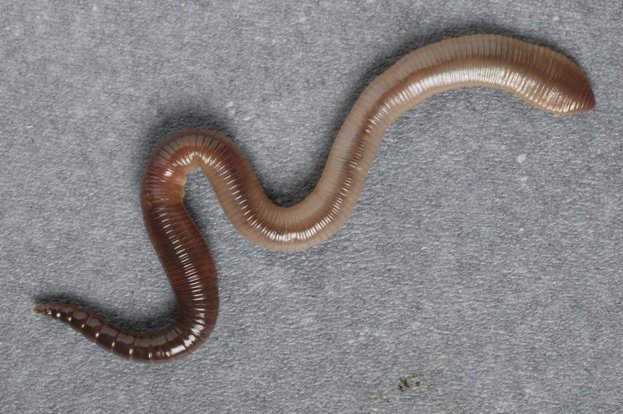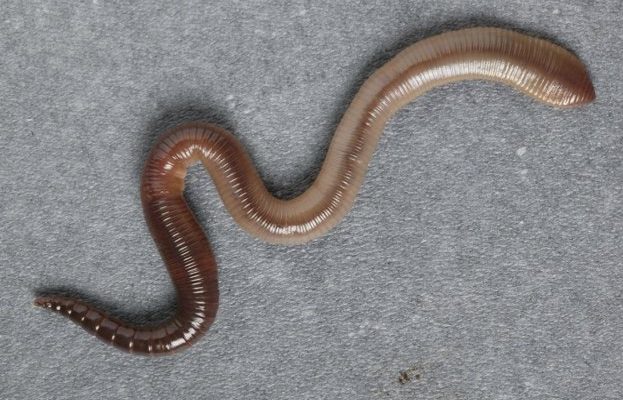
You might be wondering how exactly these creatures make such a big impact beneath the surface. Let’s dig into what earthworms are and why they’re essential for our ecosystems. Buckle up, because you’re in for a fascinating journey beneath the soil!
What Exactly Are Earthworms?
Earthworms are elongated, soft-bodied invertebrates that belong to the class Oligochaeta. You’ll often find them squiggling through damp soil, especially after a good rain. These little critters come in various species, with the most common one being the common earthworm, *Lumbricus terrestris*. They can grow up to several inches long, and their bodies are divided into segments, giving them that classic worm look.
But why do they have that slimy exterior? It’s not just for show. The mucus they produce helps them move through the soil more easily and keeps their skin moist, which is crucial for their survival. Earthworms breathe through their skin, so staying wet is essential for them.
You might imagine them as mere scavengers, munching on dead leaves and organic matter, but they’re so much more than that. Think of them as nature’s little recycling machines, breaking down debris and turning it into nutrient-rich compost.
How Do Earthworms Benefit the Soil?
One of the biggest contributions of earthworms is their role in **soil aeration**. As they burrow through the ground, they create channels that allow air and water to penetrate deeper into the soil. This process is essential because it helps plant roots access vital nutrients and moisture. Healthy roots equal healthy plants, right?
Furthermore, earthworms help with **nutrient cycling**. When they consume organic matter, they break it down in their digestive systems and excrete what’s called worm castings. These castings are rich in nutrients, like nitrogen, phosphorus, and potassium—key elements that plants thrive on. It’s almost like earthworms are providing a free, organic fertilizer!
Plus, their burrowing actions contribute to **drainage**. By allowing water to flow through the soil, they help prevent waterlogging, which can suffocate plant roots and promote root rot. So, next time you see a worm, remember that they’re not just squirming around; they’re doing important work to keep the soil alive and robust.
The Role of Earthworms in The Ecosystem
Earthworms don’t just thrive in gardens; they play a vital role in larger ecosystems too. They act as a foundational species—meaning their presence supports a whole community of other organisms. By breaking down organic matter and improving soil quality, they create a healthier habitat for plants, insects, and even small mammals.
You might be surprised to learn that earthworms also influence the **carbon cycle**. When they consume organic material, they’re effectively pulling carbon from the atmosphere and sequestering it into the soil. This helps mitigate climate change by reducing greenhouse gases. It’s a lot of work for such small creatures, isn’t it?
Moreover, earthworms serve as a food source for many animals, including birds, amphibians, and some mammals. So, when earthworms flourish, they help support the entire food web. It’s a beautiful example of how interconnected everything is in nature!
Common Misconceptions About Earthworms
There are a few myths floating around about earthworms that deserve some clarification. For instance, many people assume that all earthworms are the same, but that’s not true. Different species have different habitats and roles. Some, like the nightcrawler, prefer looser, sandy soils, while others thrive in clay.
Another common misconception is that earthworms are pests. Yes, they can be an issue in certain agricultural settings where their numbers explode, but overall, they contribute greatly to soil health. It’s a bit like saying all dogs are bad just because some bark too much!
Lastly, people often believe that earthworms can’t survive in harsh conditions. While they prefer moist environments, they can be surprisingly resilient. Some species can even withstand temporary dry spells simply by burrowing deeper into the soil.
How to Encourage Earthworm Activity in Your Garden
If you’re excited about boosting the health of your garden, one of the best things you can do is to create a hospitable environment for earthworms. Here are some tips to get you started:
- Add organic matter: Compost, decaying leaves, and kitchen scraps are like a buffet for earthworms. By incorporating these materials into your soil, you’ll attract them in droves.
- Avoid pesticides: Chemicals can harm earthworm populations, so try organic gardening methods instead. Your worms will thank you!
- Keep the soil moist: Earthworms thrive in damp environments, so regular watering is key. Just be careful not to overwater, as that can lead to waterlogging.
- Practice minimal tillage: Frequent tilling can disrupt earthworm habitats. Instead, consider no-till gardening methods to keep them safe and sound.
By following these steps, you’ll not only support the earthworm community but also create a thriving garden full of life.
The Future of Earthworms
With growing concerns about climate change and soil degradation, the future of earthworms is more crucial than ever. Their ability to enhance soil health and sequester carbon makes them valuable allies in our fight against environmental challenges.
Unfortunately, habitat loss and pollution threaten some earthworm populations. It’s important for us to be aware of these issues and take action to protect our soil ecosystems. Supporting organic farming, practicing sustainable gardening, and spreading awareness can help ensure that earthworms continue to thrive for generations to come.
In conclusion, earthworms are tiny titans of the soil. Their contributions to soil health, nutrient cycling, and ecosystem balance cannot be overstated. So, the next time you spot one of these squirmy superheroes, take a moment to appreciate all the hard work they do. They truly are nature’s unsung heroes!

